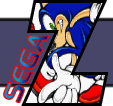  
|
 The new technology achieves an increase in performance of five times PCX2, PowerVR’s 1997 chip-level product, and a fill rate of two times PCX2. PowerVR Second-Generation products will deliver 1.2 m polygons/second and a fill rate of 120 megapixels/second equivalent. "PowerVR delivers arcade-quality feature sets and leading-edge semiconductor technology to deliver products at a mainstream price," said Charles Bellfield, product marketing manager, multimedia strategic business unit, NEC Electronics Inc. "Five new products derived from the PowerVR Second-Generation technology will ensure support for the industry’s leading 3D-accelerated titles developed for PCs, consoles and arcade systems in 1998 and beyond." "We have been tracking PowerVR since its introduction, and feel that the second- generation technology represents significant improvement," said Jon Peddie, president, Jon Peddie Associates. "We believe PowerVR will be one of the leading 3D technologies in 1998." With the support of PC manufacturers and motherboard design companies, including Compaq™ , Gateway 2000™ and Cyrix™ , and add-in-board companies, including industry-leading Matrox Graphics Inc., PowerVR is continuing to build momentum. For combined Q1, Q2 and Q3 1997, PowerVR emerged as the market leader, with a 36% market share in the performance 3D category. "Substantial improvements in 3D performance and visual quality over its original core technology will enable PowerVR Second Generation-based products to surpass the competition," said Trevor Wing, senior vice president, marketing, VideoLogic. "PowerVR is a 3D technology with ‘long legs’ which will keep pace with increasing CPU performance and feature sets of future 3D games -- the most demanding 3D graphics applications." Software SupportArchitecturally, PowerVR remains "invisible" to developers, supporting today’s most popular APIs. Designed to meet PC industry standards, PowerVR Second-Generation technology is compatible with Microsoft’s® DirectX™ and Open GL™. The new technology also provides support for new bus architectures, including Accelerated Graphics Port (AGP), as well as PCI. "What excites us about PowerVR’s second generation is that NEC is delivering top-end technology, while being a value leader," said Mark Rein, vice president, Epic MegaGames, Inc™. "You can see this in a game like ‘Unreal™,’ which looks absolutely amazing!"PerformancePowerVR Second-Generation technology achieves industry-leading performance by incorporating a number of design attributes. The new technology provides full floating-point geometry and a texture setup engine on-chip; hardware tile acceleration; hardware translucency sorting; and high-performance texture compression. On-chip setup offloads polygon and texture shading setup from the CPU, resulting in an overall performance increase. On-chip hidden-surface removal, one of the PowerVR architecture’s most significant differentiators, eliminates memory bottlenecks, reducing 3D memory requirements and delivering market-leading price/performance.FeaturesDramatic improvements in 3D image quality include perspective-correct ARGB Gouraud shading; specular highlights with offset color; unified frame buffer and texture memory for environmental mapping; 32-bit floating-point hidden surface removal accuracy; high resolutions up to 1600x1200 at true color (24-bit); and full-scene anti-aliasing using image super sampling. In addition, the PowerVR Second-Generation technology supports texture compression and a wide range of texture, filtering and blending modes, as well as advanced realism features, such as bump mapping and special effect volumes.This is the first ever screenshot of a game running on the PowerVR Second Generation graphics chip of which a version of this graphics chip will be used by SEGA in their next generation home console. The game being shown is a special version of the game Ultim@ate Race Pro from the French company, Kalisto. From what can be seen and is quite evident is that objects like the car have nice and smooth edges with no pixel stair climbing defects showing! Impressive edge anti-aliasing due to the full scene anti-aliasing that the PVRSG graphics chip does. The PowerVR will reach the graphics technology of the Model 3 board. |
| Source: NEC, The Games Mansion |
|
|
![[Click to expand]](dreamcast_urpro_screenshot_1.jpg)
![[Click to expand]](dreamcast_urpro_screenshot_2.jpg)